Training your spine is a important part of strengthening and defining your back. Whether you are a training fanatic or starting your first training plan, the workouts below will help you meet your fitness goals.
exercise ball prone leg raise
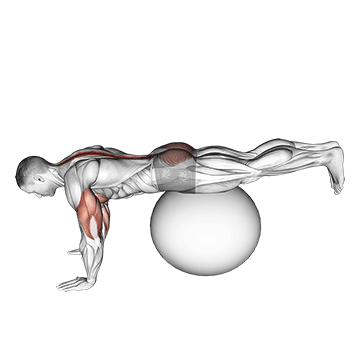
1. Start by placing a stability ball on a flat surface. Ensure you have enough space around you to perform the exercise without any obstructions.
2. Position yourself on the stability ball by lying down on your stomach. Your hands should be flat on the floor for support and your feet should be off the ground.
3. Keep your legs straight and together. This is your starting position.
4. Slowly raise your legs upwards as high as you can, while keeping them straight. Ensure you are using your back muscles to lift your legs and not straining your neck or shoulders.
5. Hold this position for a few seconds, feeling the tension in your spine and lower back.
6. Gradually lower your legs back to the starting position.
7. Repeat this movement for the desired number of repetitions.
Remember to keep your movements controlled and steady. Do not rush the exercise, as it is more important to maintain proper form than to complete more repetitions. Breathe in as you lower your legs and breathe out as you raise them. This exercise is great for strengthening your spine and improving your overall posture.
exercise ball hug
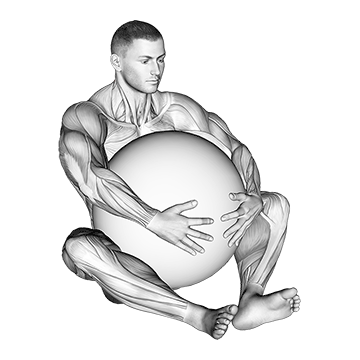
1. Start by selecting a stability ball that is the right size for your height. When you sit on the ball, your knees should be bent at a 90-degree angle with your feet flat on the floor.
2. Stand tall with your feet shoulder-width apart. Place the stability ball in front of you.
3. Bend your knees slightly and lean forward from your hips to hug the ball. Your chest should be resting on the ball and your arms should be wrapped around it.
4. Keep your back straight and engage your core muscles. This is your starting position.
5. Slowly lift the ball off the ground by straightening your knees and lifting your chest. Keep your back straight and your core engaged. The ball should be hugged close to your body.
6. Hold this position for a few seconds, feeling the stretch in your spine.
7. Slowly lower the ball back to the ground by bending your knees and lowering your chest. This completes one repetition.
8. Repeat this exercise for 10-15 repetitions, ensuring to keep your movements slow and controlled.
Remember to breathe throughout the exercise, inhaling as you lift the ball and exhaling as you lower it. This exercise not only targets your spine but also helps to improve your balance and stability.
exercise ball back extension with rotation
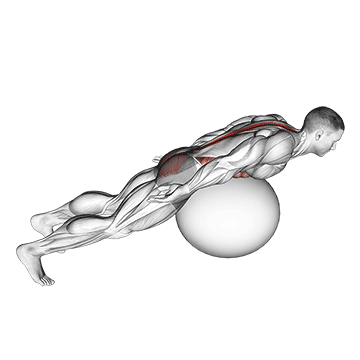
1. Start by selecting a stability ball of appropriate size. When you sit on the ball, your knees should be at a 90-degree angle.
2. Position the stability ball in front of you and slowly lower your body onto the ball, with your belly and hips resting on it. Your feet should be planted firmly on the ground, shoulder-width apart for balance.
3. Place your hands behind your head, elbows out to the sides. This is your starting position.
4. Begin the exercise by lifting your chest off the ball, extending your back, and rotating your torso to the right. Ensure you're using your back muscles and not straining your neck.
5. Hold this position for a moment, then slowly lower your chest back down to the ball, returning to the starting position.
6. Repeat the movement, this time rotating your torso to the left.
7. Continue alternating sides for each rep. Aim for 10-15 reps on each side, for 2-3 sets.
Remember to keep your movements slow and controlled, focusing on the rotation of your spine. Always keep your neck in a neutral position to avoid strain. This exercise should not cause pain, so stop if you feel any discomfort.
exercise ball back extension with knees off ground
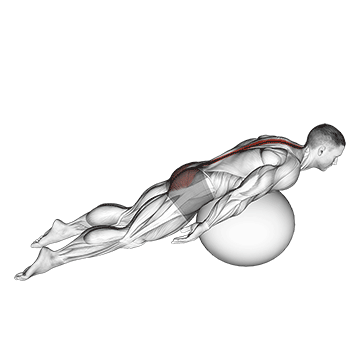
1. Start by selecting a stability ball of appropriate size. The ball should be big enough so that when you sit on it, your knees are at a 90-degree angle.
2. Place the stability ball on a flat, non-slip surface. Ensure you have enough space around you to perform the exercise without any obstructions.
3. Position yourself on the stability ball by laying your stomach and hips on the ball. Your feet should be shoulder-width apart and firmly planted on the ground. Your hands should be resting on the back of your head.
4. Lift your knees off the ground, balancing your weight on the stability ball. This is your starting position.
5. Begin the exercise by slowly extending your back upwards, lifting your chest off the ball. Keep your neck in a neutral position and ensure your movements are controlled to avoid any strain.
6. Hold this position for a few seconds, feeling the stretch in your spine.
7. Slowly lower your body back to the starting position, ensuring your movements are controlled.
8. Repeat this exercise for the desired number of repetitions.
Remember to breathe normally throughout the exercise. Inhale as you lower your body and exhale as you lift your body. Always keep your abdominal muscles engaged to maintain balance on the ball.
exercise ball back extension with hands behind head
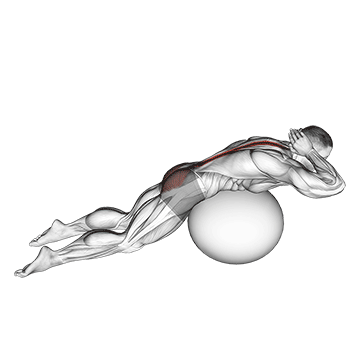
1. Start by selecting a stability ball of appropriate size. The ball should be big enough so that when you sit on it, your knees are bent at a 90-degree angle.
2. Place the stability ball on a flat, non-slip surface. Stand with your feet shoulder-width apart, facing away from the ball.
3. Slowly lower yourself onto the ball, rolling forward until your hips and stomach are resting on the ball. Your feet should be flat on the floor, legs straight, and your body should be in a straight line from your head to your heels.
4. Place your hands behind your head, elbows out to the sides. This is your starting position.
5. Begin the exercise by slowly lifting your upper body up as far as comfortably possible, using your back muscles. Keep your neck in line with your spine and avoid pulling on your neck with your hands.
6. Hold this position for a moment, then slowly lower your body back down to the starting position.
7. Repeat this movement for the desired number of repetitions.
Remember to keep your movements slow and controlled, focusing on using your back muscles to lift your body. Avoid using your arms or legs to lift your body, as this can lead to injury. Breathe out as you lift your body, and breathe in as you lower it.
exercise ball back extension with arms extended
1. Start by selecting a stability ball of appropriate size. When you sit on the ball, your knees should be bent at a 90-degree angle with your feet flat on the floor.
2. Stand with your feet shoulder-width apart and place the stability ball in front of you.
3. Slowly lean forward and roll onto the ball. Your feet should remain flat on the floor and your hands should be extended out in front of you. Your body should be in a straight line from your head to your heels.
4. Engage your core and slowly lift your upper body until it's in line with your lower body. Your arms should remain extended out in front of you throughout the movement.
5. Hold this position for a few seconds, then slowly lower your upper body back down to the starting position.
6. Repeat this exercise for the desired number of repetitions.
Remember to keep your movements slow and controlled, and to keep your core engaged throughout the exercise. This will help to protect your spine and ensure that you're working the correct muscles.
back extension on exercise ball
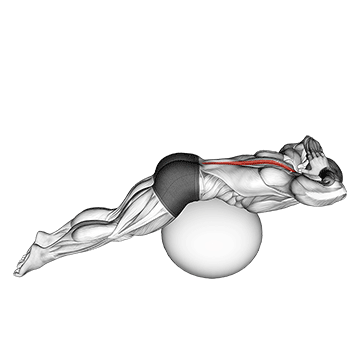
1. Start by selecting a stability ball of appropriate size. When you sit on the ball, your knees should be at a 90-degree angle.
2. Place the stability ball on a flat, non-slip surface. Ensure you have enough space around you to move freely.
3. Position yourself on the ball by sitting down and then walking your feet forward, rolling the ball along your body until it is under your hips and lower abdomen. Your feet should be flat on the floor, hip-width apart for balance.
4. Cross your arms over your chest or place them behind your head. This is your starting position.
5. Slowly lower your upper body towards the floor, bending at the waist as far as comfortably possible. Keep your back straight and avoid straining your neck.
6. Pause for a moment at the bottom of the movement, then slowly raise your upper body back up to the starting position. This should be done by contracting your back muscles, not by pushing off with your feet.
7. Repeat this movement for the desired number of repetitions.
Remember to keep your movements slow and controlled, focusing on the muscles along your spine. Breathe in as you lower your body and breathe out as you lift your body back up.
No tags for this post.
